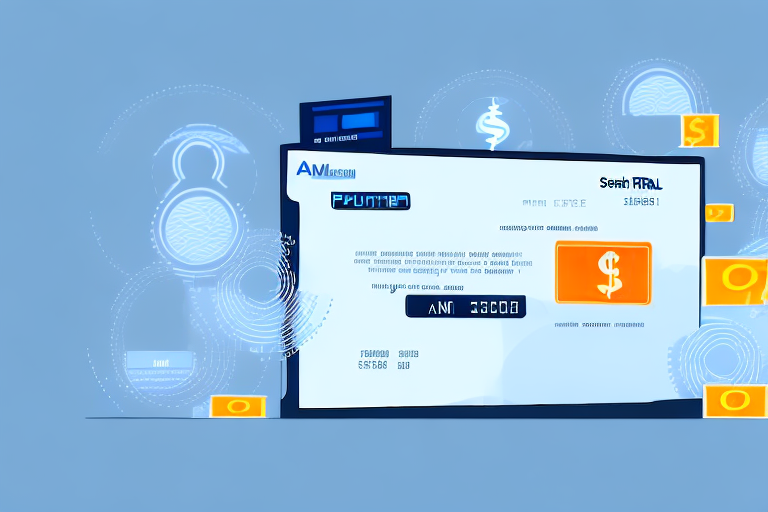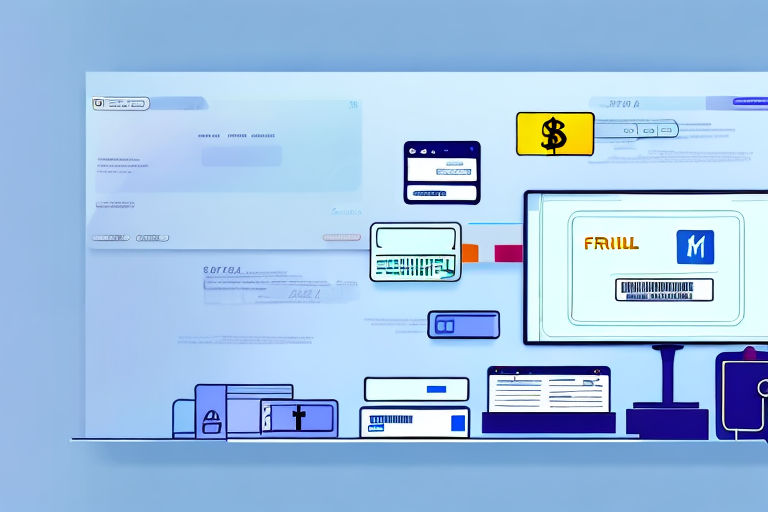
How can Financial Institutions Control Fraud on Real Time, faster Payment Rails?
Real-time, faster payment rails are becoming increasingly popular in today’s digital economy. These payment systems allow money to be transferred instantly between bank accounts, making transactions easier and faster. Financial institutions have also discovered the benefits of these payment systems, such as increased efficiency and cost savings, but they also face a growing threat of fraud.
Understanding Real-Time, Faster Payment Rails
To understand how financial institutions can control fraud on real-time, faster payment rails, it is essential first to know what they are and how they work.
The Evolution of Payment Systems
Traditional payment systems, such as checks and wire transfers, can take several days to clear and settle transactions. This delay can cause issues for individuals and businesses, who may need immediate access to their funds. On the other hand, Real-time, faster payment rails allow money to be transferred between accounts almost instantly, 24/7. In addition, these payment systems are based on new technologies like the Automated Clearing House (ACH) and blockchain-based solutions.
The ACH is an electronic network financial institutions use to process transactions in batches. It allows for direct deposits, payroll payments, and other types of transactions. However, these transactions can take up to a few days to clear. Blockchain-based solutions, on the other hand, use a decentralized ledger to record and verify transactions. This allows for faster processing times, as there is no need for a centralized authority to approve transactions.
Key Features of Real-Time Payment Rails
Real-time payment rails boast several unique features, including:
- Instant transfer of funds: Transactions are processed in real-time, which means that money is transferred from one account to another almost immediately. This feature is handy for businesses and individuals who need access to their funds quickly.
- Low cost: Compared to traditional payment methods, real-time payment rails are often cheaper, making them an attractive option for financial institutions. This can lead to cost savings for both the institution and the customer.
- Increased accessibility: Because these payment systems are available 24/7, they offer increased accessibility, making them perfect for the digital age. This means that customers can access their funds anytime, anywhere.
Real-time payment rails also offer increased security for financial institutions and their customers. Because transactions are processed in real-time, fraudulent activities can be detected and prevented more quickly. This is particularly important in today’s digital age, where cyberattacks and other types of fraud are becoming increasingly common.
Real-time payment rails offer several benefits for financial institutions and their customers. By providing faster processing times, lower costs, and increased accessibility, these payment systems are quickly becoming the preferred payment method for many businesses and individuals.
The Growing Threat of Fraud in Financial Institutions
While real-time payment rails offer numerous benefits, they also pose unique risks regarding fraud. As a result, financial institutions must understand the different types of fraud that can occur in payment systems and their impact on the institution and its customers.
Common Types of Fraud in Payment Systems
Some of the most common types of fraud associated with payment systems include:
- Account takeover: This type of fraud occurs when a criminal gains access to a victim’s bank account and initiates fraudulent transactions. Criminals use various methods to access an account, such as phishing scams or malware.
- Payment rerouting: This type of fraud involves criminals intercepting and redirecting legitimate payments to their own accounts. This can happen through various means, such as hacking a company’s system or using social engineering tactics to trick employees into changing payment details.
- Phishing: This type of fraud involves tricking people into giving away their personal information, such as login credentials or financial details. Phishing scams can come in many forms, such as emails, text messages, or phone calls, and often appear to be from a legitimate source.
The Impact of Fraud on Financial Institutions and Customers
When fraud occurs, both financial institutions and their customers can suffer. For financial institutions, the impact can include significant financial losses, damage to the institution’s reputation, and regulatory fines. In addition, fraud can lead to increased costs for implementing better security measures and investigating incidents.
For customers, the impact can include losing funds, identity theft, and damage to their credit score. In addition, victims of fraud may also experience emotional distress and a loss of trust in financial institutions.
Financial institutions must take proactive measures to prevent fraud, such as implementing robust security protocols, educating customers on how to protect themselves from fraud, and utilizing fraud detection and prevention tools. By taking these steps, financial institutions can help mitigate the risks associated with payment system fraud and protect both themselves and their customers.
Strategies for Fraud Detection and Prevention
Now that we have seen the potential risks let’s look into financial institutions’ strategies to control fraud on real-time, faster payment rails.
As financial institutions adopt faster payment rails, the need for effective fraud detection and prevention strategies becomes increasingly important. Fraudulent activity can occur in many forms, such as identity theft, account takeover, and unauthorized transactions. These risks can cause significant financial losses and damage financial institutions’ reputations.
Implementing Advanced Analytics and Machine Learning
 One strategy that financial institutions are using to detect fraud is by implementing advanced analytics and machine learning. These tools can help institutions identify potential cases of fraudulent activity by analyzing massive amounts of data from transaction histories, devices, and behavior patterns.
One strategy that financial institutions are using to detect fraud is by implementing advanced analytics and machine learning. These tools can help institutions identify potential cases of fraudulent activity by analyzing massive amounts of data from transaction histories, devices, and behavior patterns.
For example, machine learning algorithms can analyze transaction data to identify behavior patterns that may indicate fraudulent activity. This could include unusual transaction amounts, locations, or times. As a result, financial institutions can quickly detect and respond to potential fraud by analyzing this data in real-time.
Utilizing Real-Time Monitoring and Alerts
Another effective strategy is to utilize real-time monitoring and alerts. By monitoring transactions in real-time, financial institutions can detect and respond to suspicious activity as it happens. This can significantly reduce the impact of fraudulent transactions and help financial institutions mitigate risks associated with real-time payment rails.
Real-time monitoring can also help financial institutions identify potential fraud before it occurs. For example, the financial institution can alert the customer to confirm the transaction if a customer’s account is accessed from a new device or location.
Strengthening Authentication and Authorization Processes
Strengthening authentication and authorization processes is another critical strategy for financial institutions to control fraud on real-time, faster payment rails. This can include implementing multi-factor authentication, such as face recognition, which adds an extra layer of security to transactions and reduces the risk of fraud.
Additionally, financial institutions can use biometric authentication, such as fingerprint or voice recognition, to verify the identity of customers. This can help prevent account takeover and unauthorized transactions.
In conclusion, financial institutions must continue to implement effective fraud detection and prevention strategies to mitigate the risks associated with real-time, faster payment rails. By utilizing advanced analytics, real-time monitoring, and strengthening authentication and authorization processes, financial institutions can reduce the impact of fraudulent activity and protect their customers from financial losses.
Collaboration and Information Sharing among Financial Institutions
As the world becomes increasingly digital, the risk of fraud on real-time, faster payment rails has become a significant concern for financial institutions. While there are many strategies that institutions can use to control fraud, one of the most important is collaboration and information sharing.
By working together, financial institutions can share information about known fraudsters, scams, and other types of fraudulent activity. This can help institutions stay one step ahead of criminals and significantly reduce the impact of fraud.
The Role of Regulatory Bodies in Fraud Prevention
In addition to collaboration among financial institutions, regulatory bodies also play a critical role in fraud prevention. The Federal Reserve and the Consumer Financial Protection Bureau are just two examples of regulatory bodies establishing standards and regulations for financial institutions.
These standards and regulations can help ensure that all institutions follow the best fraud detection and prevention practices. In addition, by setting clear guidelines and expectations, regulatory bodies can help institutions better protect themselves and their customers from fraud.
Benefits of Cross-Institutional Collaboration
One of the most significant benefits of cross-institutional collaboration is the ability to share information about fraudulent activity. When one institution detects fraud, it can quickly share that information with other institutions to help prevent further losses.
Collaboration can also help institutions identify patterns and trends in fraudulent activity. By working together, institutions can better understand the methods used by fraudsters and develop more effective strategies for preventing and detecting fraud.
Collaboration and information sharing are essential strategies for controlling fraud on real-time, faster payment rails. By working together and sharing information, financial institutions can better protect themselves and their customers from the devastating impact of fraud.
Case Studies: Successful Fraud Control in Real-Time Payment Systems
Real-time payment systems have revolutionized the way we transfer money. They have made it faster and more convenient to send and receive funds. However, with this convenience comes the risk of fraud. Fraudsters are constantly looking for ways to exploit vulnerabilities in payment systems. Therefore, financial institutions offering real-time payment systems must be vigilant and proactive in their fraud control measures.
Several examples of financial institutions have successfully controlled fraud on real-time, faster payment rails. Here are some important lessons learned and best practices from these case studies.
Lessons Learned from Leading Financial Institutions
Leading financial institutions that have successfully controlled fraud on real-time, faster payment rails have learned that real-time monitoring and alerts are critical for detecting and responding to fraudulent transactions. They have also found that advanced analytics and machine learning can help identify patterns and risks associated with fraud. Additionally, strengthened authentication and authorization processes can reduce the risk of account takeover and other types of fraud.
For example, one leading financial institution implemented a real-time monitoring system that alerted them to suspicious activity as soon as it occurred. They quickly responded to these alerts and prevented fraudulent transactions from being processed. They also used advanced analytics and machine learning to analyze transaction patterns and identify potential risks. This allowed them to implement fraud control measures before any fraud occurred proactively.
Best Practices for Fraud Control in Faster Payment Rails
 Based on case studies and best practices, financial institutions that want to control fraud in real-time, faster payment rails should invest in cutting-edge fraud detection tools and technologies, such as advanced analytics and machine learning. They should also monitor real-time transactions and quickly respond to suspicious activity. Strengthening authentication and authorization processes is also crucial to reducing the risk of account takeover and other types of fraud.
Based on case studies and best practices, financial institutions that want to control fraud in real-time, faster payment rails should invest in cutting-edge fraud detection tools and technologies, such as advanced analytics and machine learning. They should also monitor real-time transactions and quickly respond to suspicious activity. Strengthening authentication and authorization processes is also crucial to reducing the risk of account takeover and other types of fraud.
Another best practice is to collaborate and share information with other financial institutions. By working together, financial institutions can stay one step ahead of fraudsters. In addition, they can share information about known fraudsters and suspicious activity, which can help prevent fraudulent transactions from occurring.
In conclusion, fraud control is a critical aspect of real-time payment systems. Financial institutions offering these systems must be proactive in their fraud control measures. By learning from case studies and implementing best practices, they can effectively control fraud and ensure that their customers can continue to enjoy the benefits of real-time payments.
Real-time, faster payment rails offer numerous benefits to financial institutions and their customers, but they also pose unique risks regarding fraud. Fortunately, there are several effective strategies that financial institutions can implement to control fraud, such as advanced analytics, real-time monitoring, and strengthened authentication processes. In addition, by collaborating and sharing information with others in the industry, financial institutions can stay one step ahead of criminals and keep transactions safe and secure.
It is not easy to control fraud on real time, faster payment rails, but financial firms must keep at it as fraudsters will not let up.

